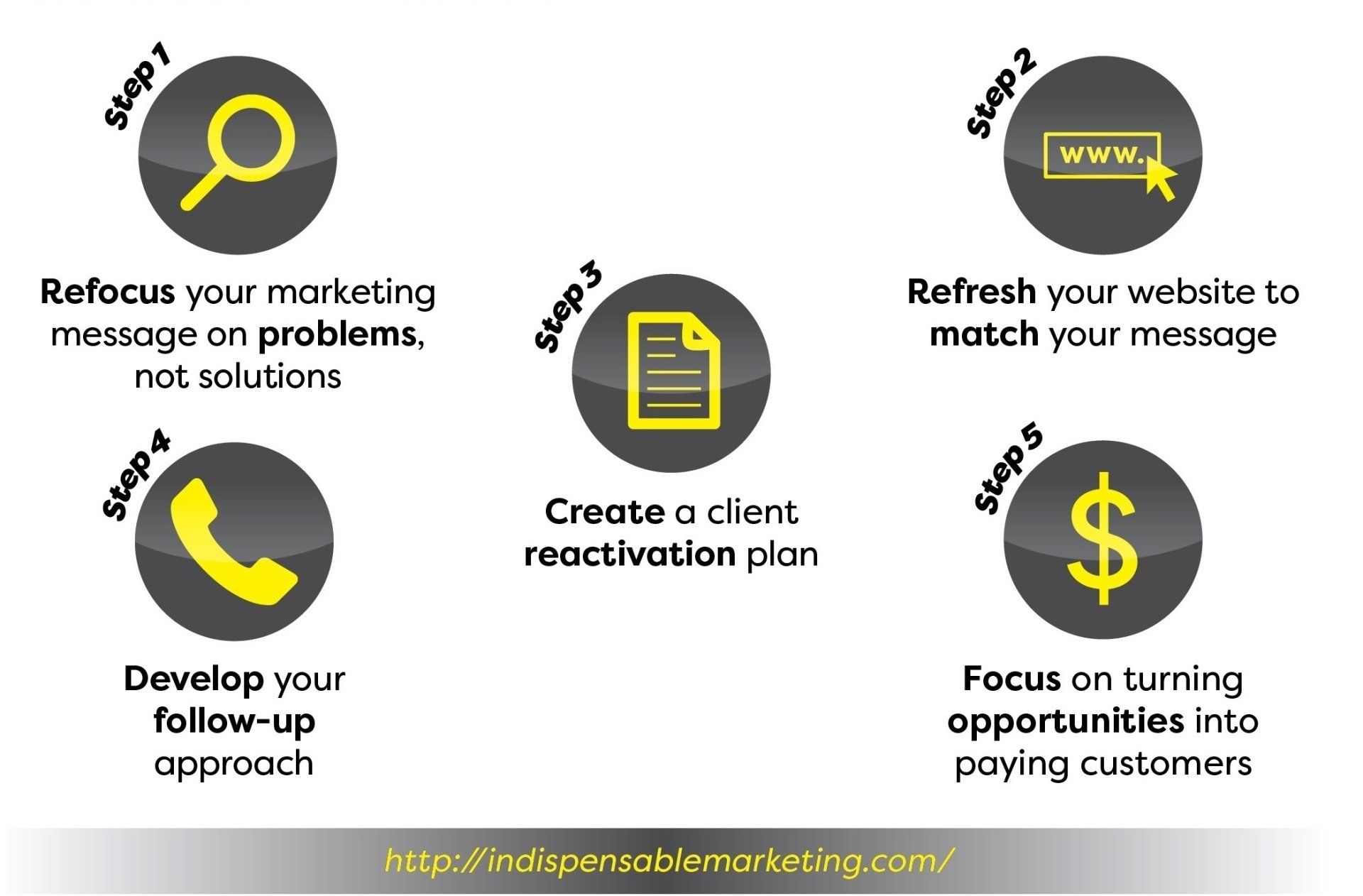5 Steps to Restart and Revive Marketing Your Small Business
When you work all year on marketing your small business you sometimes find yourself in shiny object syndrome and not on track to meet your business goals. This can be a frustrating and challenging time.
I’ve found that we all fall into that trap and it helps to spend time restarting and reviving marketing your small business, by doing these 5 steps.
5 Steps to Restart and Revive Marketing Your Small Business
#1 Refocus your marketing message on problems, not solutions
The first step in restarting and reviving your marketing is to speak to problems, before solutions. If you don’t take this step seriously, everything else you do in terms of marketing will be far less effective.
When you’re taking the time to address the problems your ideal customers see and feel before offering your solution, there is little chance the marketing activities you’re implementing to attract and convert them won’t resonate.
Make a list of the problems you solve for ideal clients
If you’re having a tough time thinking about your ideal client’s problems, think about the conversations you had leading up to your sales meeting, the things addressed in your client interview or hopefully, you’re a good note taker and can revisit those for some insight.
For example, a lot my firms prospective clients might say things like – I just want my phone to ring, I want to be on the first page of Google, I want more referrals, I want less marketing headaches, I want my website to generate leads, I feel like I’m wasting money on ineffective marketing, etc.
So my firm don’t sell strategic marketing consulting services or marketing plans or even consulting – all my ideal clients need to know about what we do is that:
- We make the phone ring – end of story.
- We get you on the first page of Google – end of story.
- We make more referrals happen – end of story.
- We make marketing headaches go away – end of story.
- We make the website generate leads – end of story.
- We make marketing dollars go to work – end of story.
Another example, a massage practice: They might have the best tables, oils, and most highly skilled therapist but all their customers seem to care about is that their pain and discomfort go away.
So that’s the promise they need to communicate, shout about and promote. The rest is an expectation – I mean doesn’t everyone in the massage business have highly skilled therapist.
That’s it – that’s how you retarget your message so it’s no longer about you and your remarkable products and services and it’s all about your remarkable clients and the problems they want to be solved.
#2 Refresh your website to match your message
This is what we worked on in the previous section. If you haven’t completed step #1, don’t pass go here – go back and get your problem-addressing message.
The purpose of the message is grab the attention and interest of website visitors. This will also show the visitor that you understand the challenges they face. You need to make your website match your message to solve their problems.
This is the message from a marketing consulting company – We Make Your Phone Ring! They recognize for most small business owners organizing marketing and buying marketing services is confusing but owners do it to bring in business, so the problem that they solve is to make the phone ring.
#3 Create a client reactivation plan
If you have clients that you havent heard from in a while, a good way to re-engage them is to write them a reactivation letter or make a reactivation call.
In the letter, you remind them of the results they received from your services. Then you can mention any positive changes and/or new services you might offer, as well as explaining to them that you now offer a new way for them to get valuable information that will help them with the area they came to you for help with previously.
Let them know you will be giving them a subscription to your newsletter so they can gain the value of that information. This way, you can get them right into the follow-up plan you have created.
#4. Develop your follow-up approach
#5 Focus on turning opportunities into paying customers
If you’ve taken to heart and over a period of time implemented step 1-4, you should no longer have to focus on leads, website traffic, followers, and likes. The highest priority at this point in your marketing strategy should be conversion – turning opportunities into paying customers.
When you can figure out how to get prospects to call you, visitors to your website and attendees to respond to your presentation, then your focus must be on converting that interest into business.
Map out and adjust your process approach for sales. Literally write down the exact steps of what happens in a step 1, step 2, step 3 format, after your phone rings or your email bings, and adjust the steps for effectiveness.





